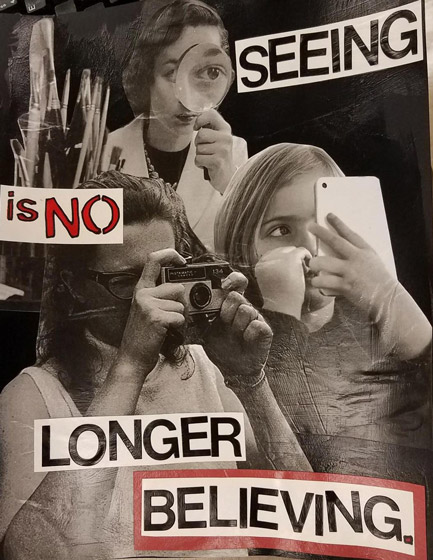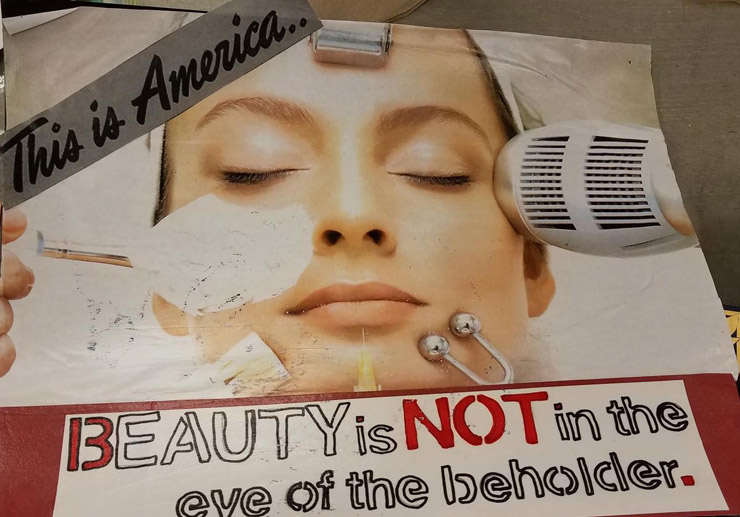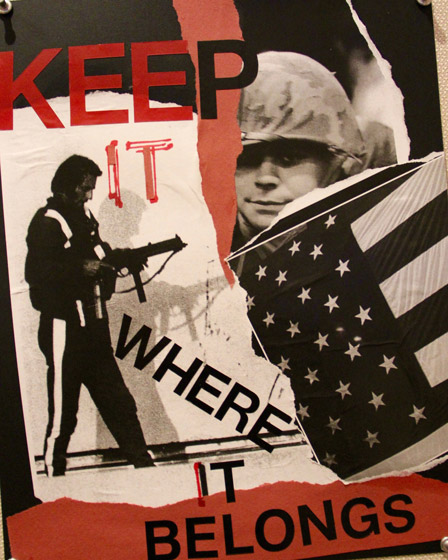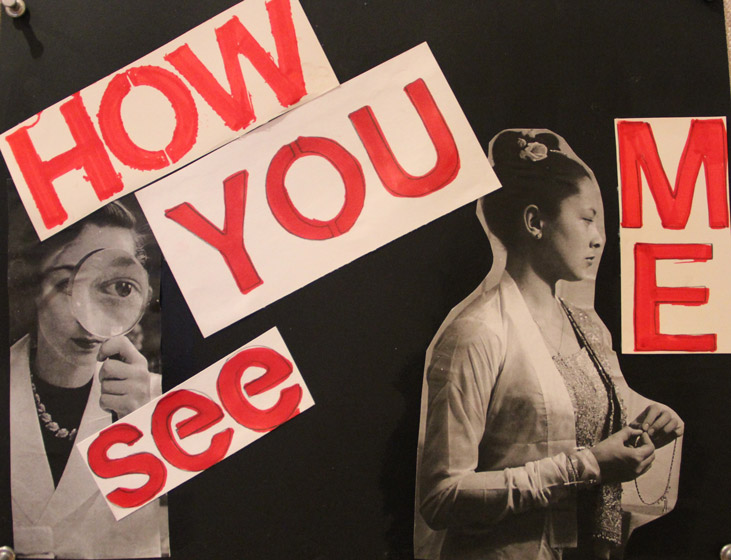Barbara Kruger, Untitled (Know nothing, Believe anything, Forget everything), 1987/2014, digital print on vinyl, National Gallery of Art, Washington, Gift of the Collectors Committee, Sharon and John D. Rockefeller IV, Howard and Roberta Ahmanson, Denise and Andrew Saul, Lenore S. and Bernard A. Greenberg Fund, Agnes Gund, and Michelle Smith, 2014.38.1
Text and Art
Grade Level: 9–12 Curriculum Connections: History/Social Studies
Students will examine the work of artist Barbara Kruger and consider how visual media, such as in print and advertising, can be constructed to influence viewers' perceptions and behaviors. Students will create their own works of art combining text and image to voice a perspective, as inspired by the work of Kruger.
Discussion
- How would you describe Kruger's imagery?
- Why do you think the artist uses text alongside images? How does the text change or relate to the image it is paired with?
- How does visual media as seen in print and advertising influence perception and behavior?
- How can art be a vehicle for social critique?
Background
“I am interested in working with pictures and words because I think they have the power to tell us who we are and who we aren't, who we can be and who we can never be.” —Barbara Kruger
“Seeing is no longer believing. The very notion of truth has been put into crisis. In a world bloated with images, we are finally learning that photographs do indeed lie." —Barbara Kruger
Artist Barbara Kruger worked as a layout editor at Condé Nast for 12 years, including posts at Mademoiselle, House and Garden, and Aperture. In 1969 Kruger began to make her own art while also writing poetry, film, and television reviews. A decade later she had developed her "picture pratice" with photographs repurposed from vintage manuals and magazines, which she had overlaid with her own texts or commonplace phrases. The completed works alter her found materials, placing her statements and questions over the images to rouse the viewer. Owing to her interest in the public arena and the everyday, Kruger's work has appeared on billboards, bus cards, posters, T-shirts, matchbook covers, and train station platform advertisements.
In the above work, Untitled (Know nothing, Believe anything, Forget everything), these admonishing phrases are placed across a photograph of a woman lying down and receiving an unknown medical treatment to her eye through a funnel-like device. Kruger's works often confront the idea of representation, particularly as found in mass media.
Watch the short film below to view artist discuss her work and her artistic practice:
Activity
Have students brainstorm as a class about topics or social issues they are interested in and on which they have a point of view. Discuss relevant concepts like propaganda and media bias.
Students can sketch out a few initial ideas to explore in a poster that combines text and art and then work in pairs to give feedback about which idea to pursue. Students will then use their found images, stencils, and construction paper to translate their ideas. Students should write a short artist's statement that explains intent, challenges, and achievements in their works of art.
Materials: Images from magazines and newspapers; lettering stencils; black and red markers; black and red construction paper; scissors; glue; poster board or heavy paper; rulers; cutting boards
See sample artworks below:
National Core Arts Standards
VA:Cn10.1.HSIII Synthesize knowledge of social, cultural, historical, and personal life with art-making approaches to create meaningful works of art or design.
VACr3.1.HSII Engage in constructive critique with peers, then reflect on, re-engage, revise, and refine works of art and design in response to personal artistic vision.
VA:Re7.1.HSIII Analyze how responses to art develop over time based on knowledge of and experience with art and life.
VA:Re7.2.HSII Evaluate the effectiveness of an image or images to influence ideas, feelings, and behaviors of specific audiences.
Download or borrow the Art Since 1950 teaching packet
Borrow the 20th-Century American Art DVD
Play the NGAKids Paintbox interactive
Play the NGAKids Photo Op interactive


















